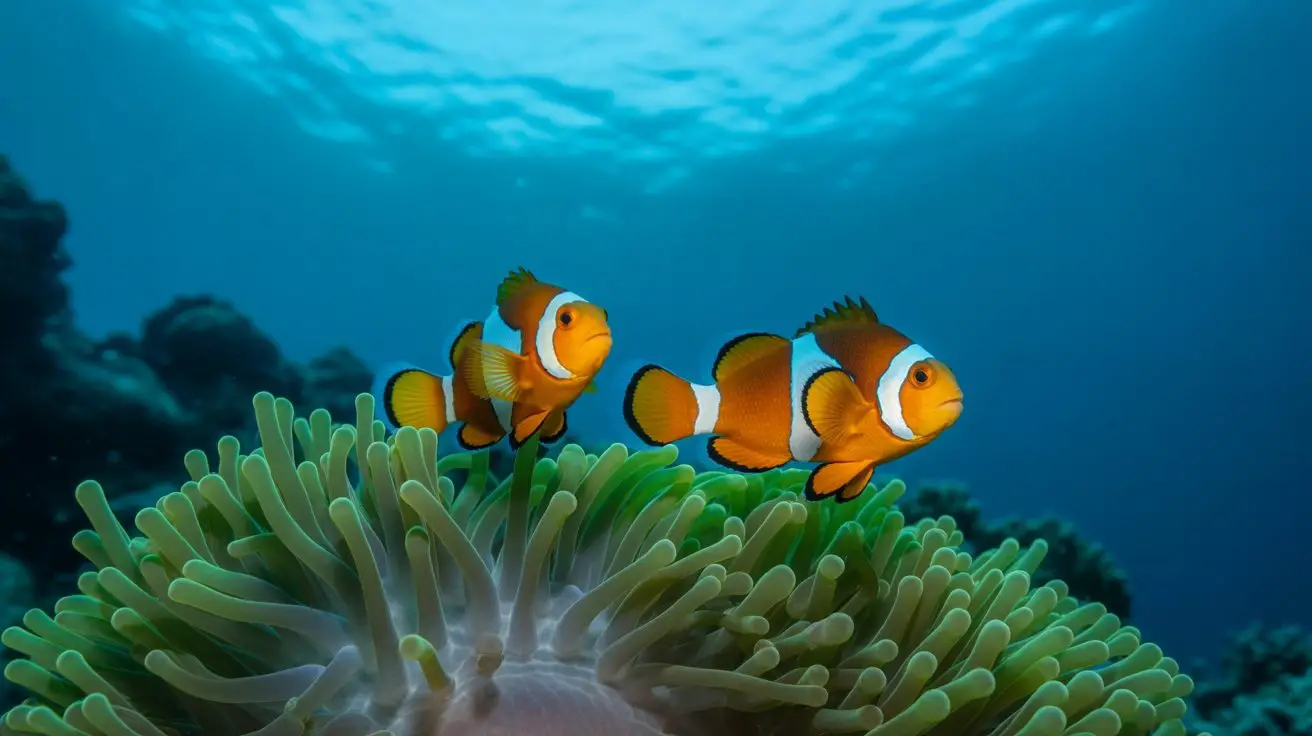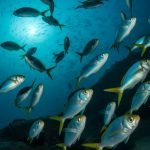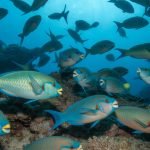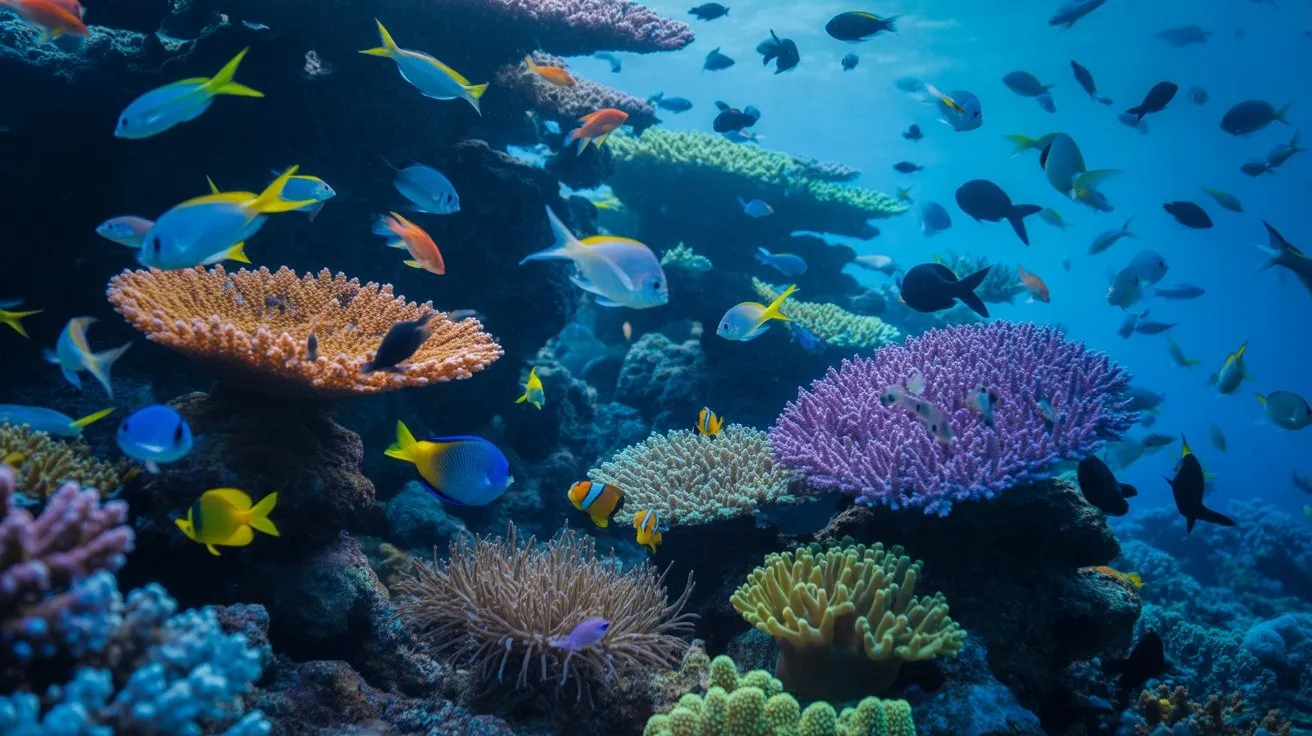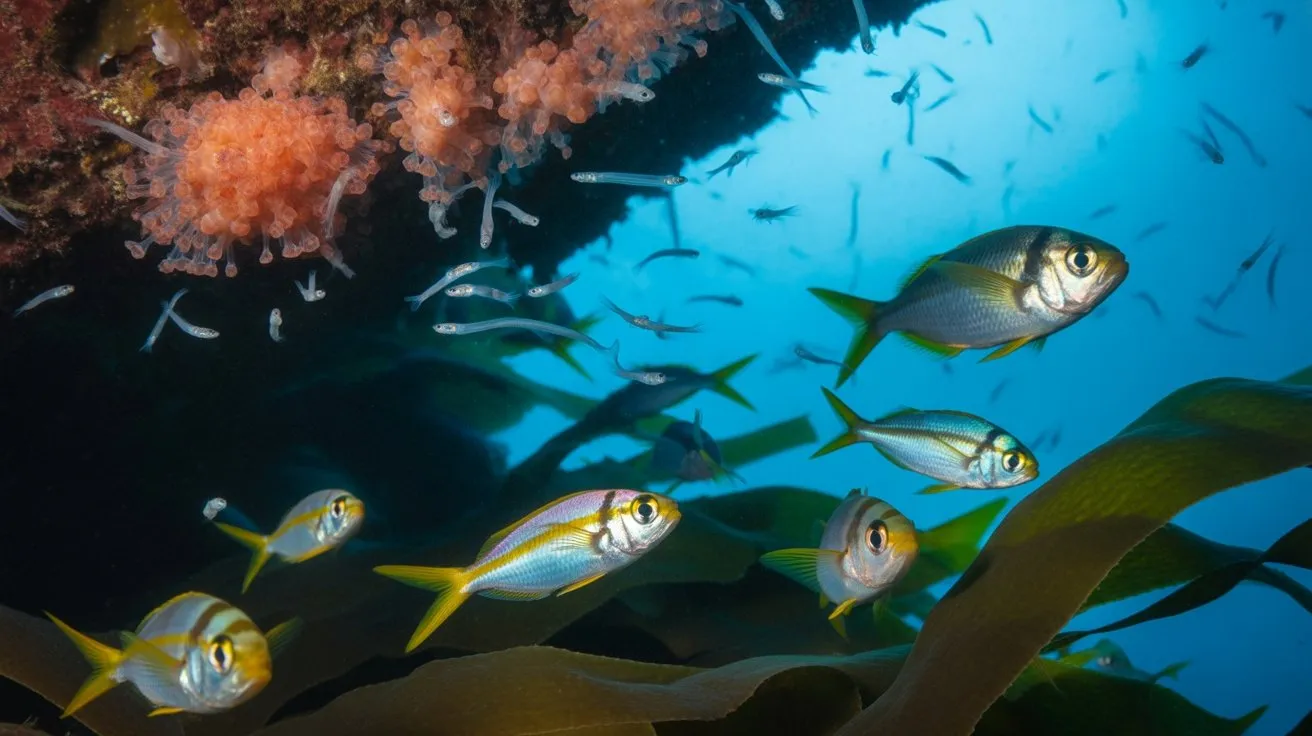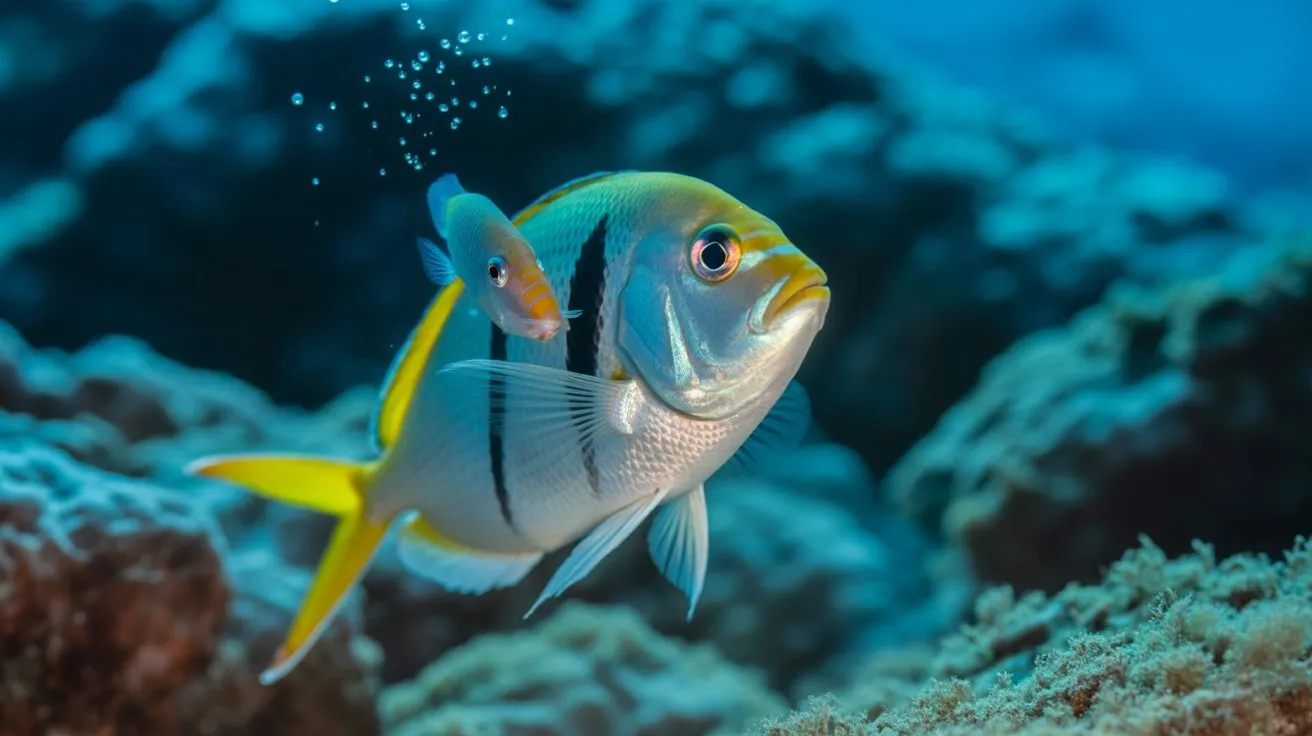You’ve encountered clownfish through Pixar’s colorful animation, but the actual Amphiprioninae subfamily reveals far more complex behaviors than Disney portrayed. These reef-dwelling fish demonstrate sequential hermaphroditism, mutualistic symbiosis with cnidarian hosts, and territorial breeding patterns that reshape your understanding of marine family structures. Scientific evidence shows their anemone relationships involve sophisticated chemical communication and immunity development. What you haven’t seen are the dramatic reproductive transformations that would’ve completely altered Marlin’s character arc.
The Real-Life Inspiration Behind Marlin and Nemo’s Species
When Pixar’s animators designed Marlin and Nemo for Finding Nemo, they based these characters on the ocellaris clownfish (Amphiprion ocellatus), a species distinguished by its bright orange coloration with three distinctive white bands bordered by black margins.
You’ll find these fish naturally inhabiting coral reefs throughout the Indo-Pacific region, from the Red Sea to northern Australia. They’re scientifically classified within the subfamily Amphiprioninae, comprising 30 recognized species.
The ocellaris clownfish exhibits mutualistic symbiosis with sea anemones, particularly Heteractis magnifica and Stichodactyla gigantea. You’ll observe their maximum length reaches 11 centimeters, with juveniles displaying more pronounced white banding than adults.
Their distinctive morphology includes a compressed body shape, single dorsal fin, and specialized mucus coating that provides immunity against anemone stings.
Clownfish and Sea Anemone Partnerships: Nature’s Perfect Roommate Situation
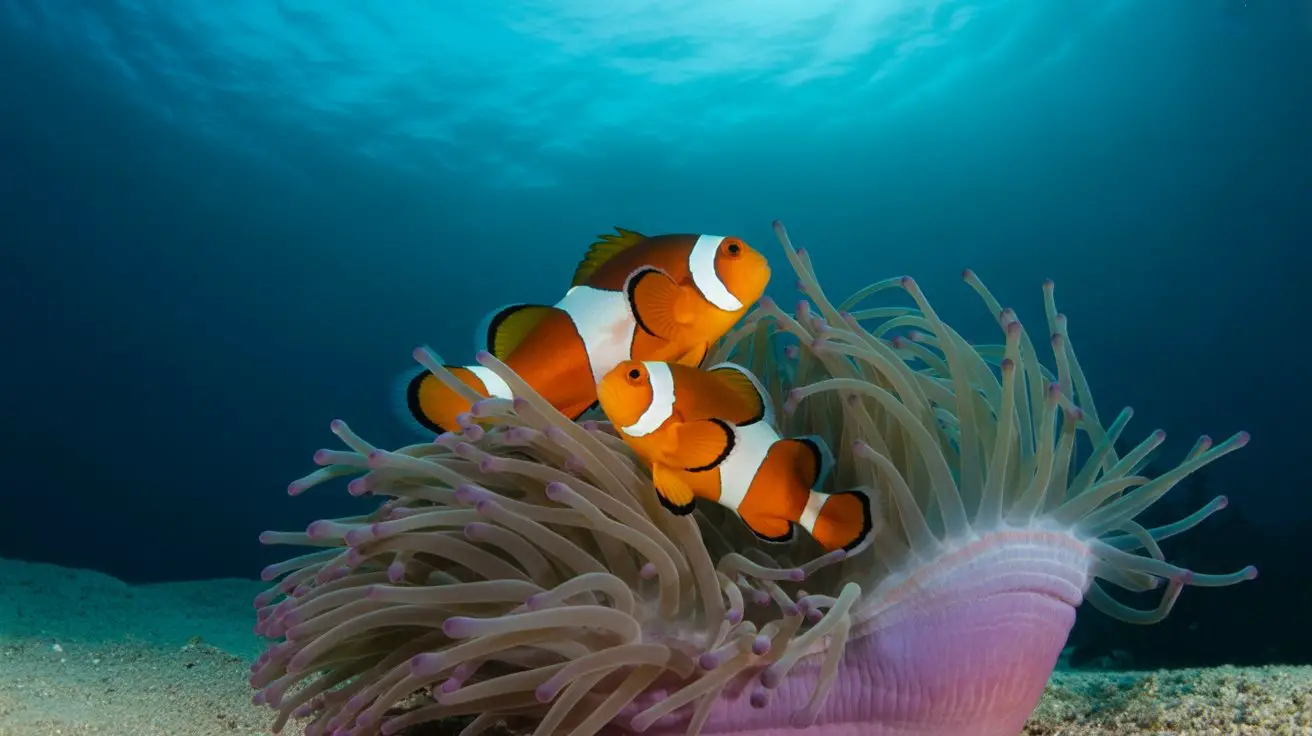
Despite their stinging tentacles that can paralyze most marine organisms, sea anemones provide clownfish with protective shelter in exchange for cleaning services and nutrient distribution.
You’ll observe this mutualistic symbiosis begins when juvenile clownfish gradually acclimate to anemone mucus through controlled exposure, developing immunity to nematocyst discharge. The clownfish’s specialized mucus coating contains altered protein structures that prevent cnidocyte activation.
You’ll notice clownfish remove parasites, dead tissue, and algae from their host while circulating oxygenated water through tentacle movement.
They’ll also deposit nitrogen-rich waste products that anemones utilize for metabolic processes. This partnership increases both species’ survival rates—anemones receive enhanced health benefits while clownfish gain predator protection.
Research demonstrates clownfish-inhabited anemones show improved growth rates and reproductive success compared to uninhabited specimens.
Gender-Swapping Superpowers That Disney Didn’t Show You
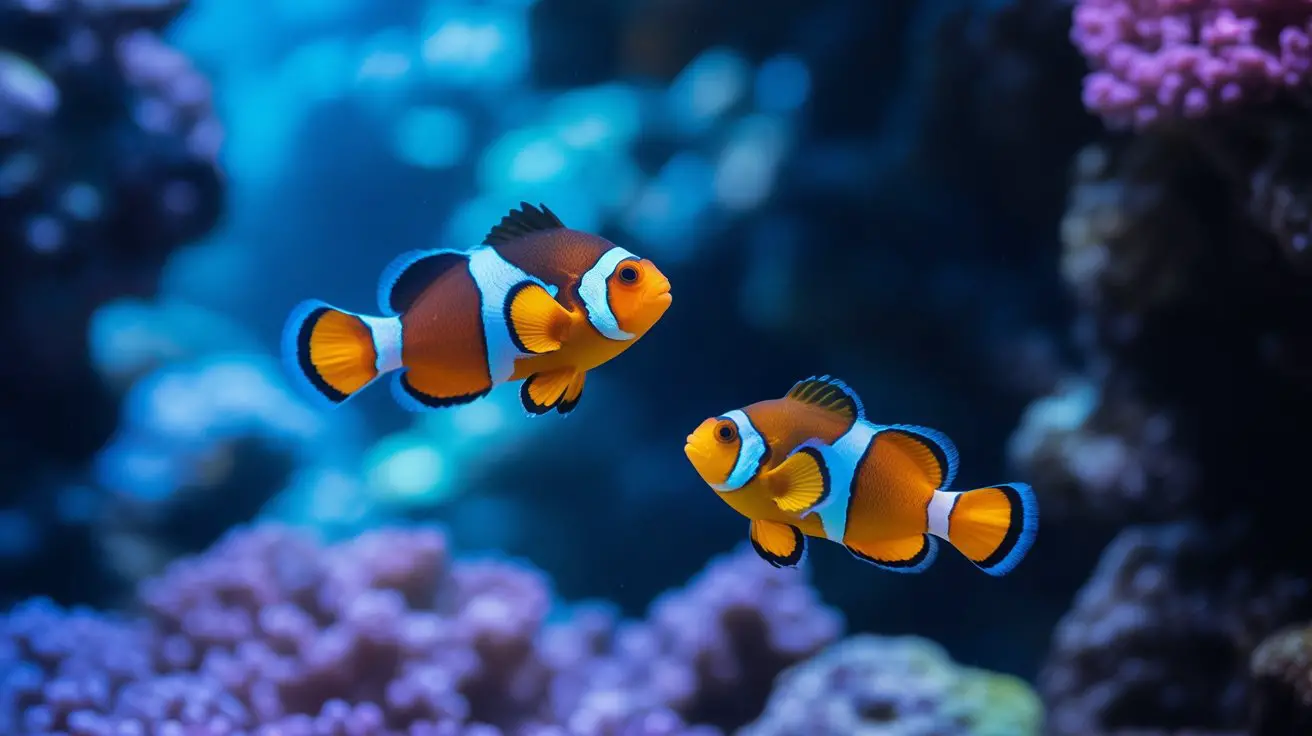
Unlike most vertebrates that maintain fixed sexual characteristics throughout their lives, clownfish possess sequential hermaphroditism—a reproductive strategy enabling them to change from male to female based on environmental conditions.
You’ll find all clownfish begin life as males within strict social hierarchies dominated by one reproductive female. When the dominant female dies or disappears, the largest male undergoes physiological transformation within 10-14 days.
The gender alteration process involves:
- Gonadal restructuring – Testes degenerate while ovarian tissue develops
- Hormonal cascades – Estrogen levels increase dramatically, suppressing testosterone production
- Behavioral modifications – Territorial aggression intensifies, courtship patterns shift
- Morphological changes – Body size increases considerably, coloration may alter
This protandrous hermaphroditism guarantees reproductive continuity within anemone colonies, maximizing breeding success when environmental pressures threaten population stability.
How Accurate Was Nemo’s “Lucky Fin” Disability Representation?
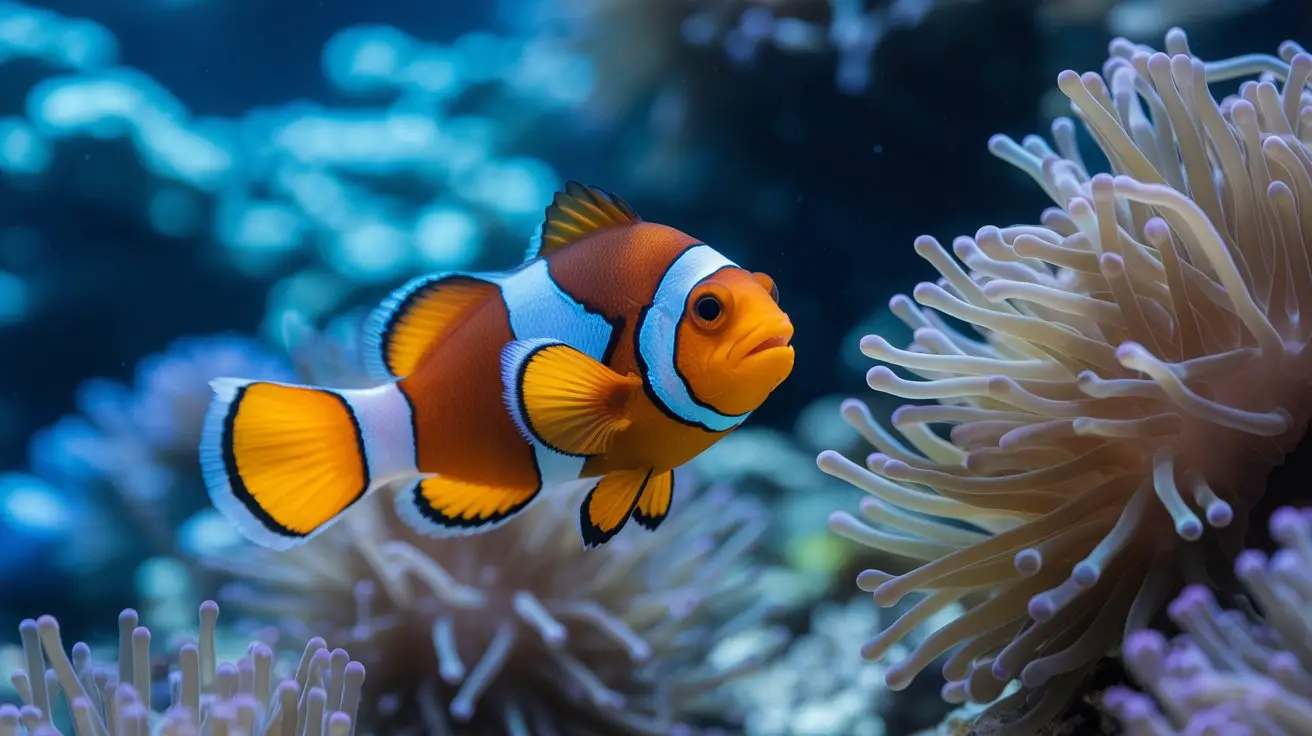
Although Finding Nemo’s portrayal of Nemo’s underdeveloped pectoral fin demonstrates Disney’s attempt at disability representation, the film’s depiction contains several biological inaccuracies regarding fin deformities in wild clownfish populations.
You’ll find that congenital fin malformations in *Amphiprion* species rarely occur in nature due to natural selection pressures. Affected juveniles typically can’t compete effectively for anemone territory or escape predators, resulting in reduced survival rates. The film inaccurately suggests Nemo’s condition wouldn’t greatly impact his swimming capabilities or predator evasion.
However, you should note that Disney’s representation does accurately portray adaptive behaviors. Real clownfish with fin deformities can develop compensatory swimming techniques, though you’d observe substantially greater functional limitations than Nemo demonstrates throughout his oceanic adventures.
The Great Barrier Reef vs. Hollywood: Comparing Real and Animated Habitats
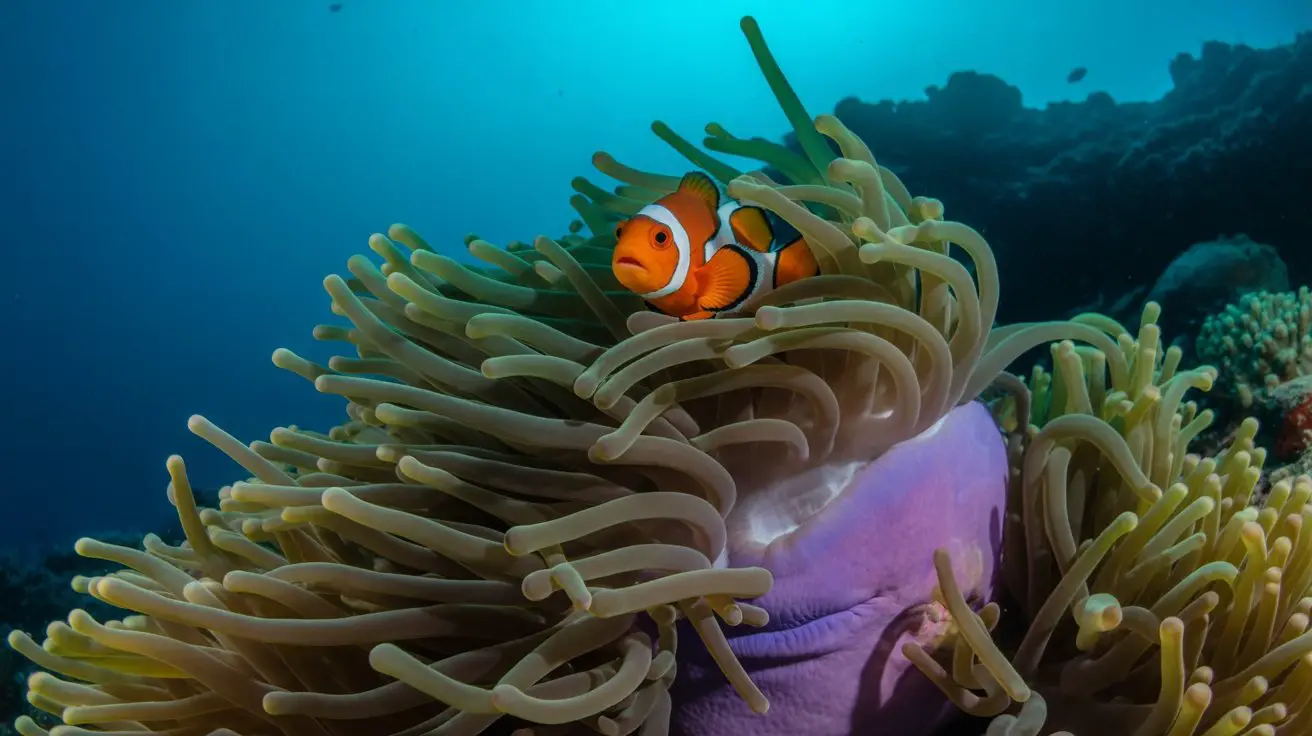
Beyond Nemo’s physical characteristics, the film’s depiction of the Great Barrier Reef ecosystem presents significant departures from actual marine biodiversity and habitat structure.
You’ll notice several key discrepancies when comparing Pixar’s animated environment to empirical reef data:
- Species distribution accuracy: The film places Indo-Pacific and Caribbean species together, violating biogeographical boundaries that separate these distinct marine provinces.
- Coral morphology representation: Animated corals lack the structural complexity and calcium carbonate skeletal frameworks characteristic of scleractinian species.
- Depth zonation errors: Pelagic species appear in benthic zones where they wouldn’t naturally occur due to pressure, light, and temperature gradients.
- Symbiotic relationship oversimplification: The anemone-clownfish mutualism excludes critical ecological factors like territory defense and spawning site selection.
Additionally, the film overlooks the role of coral reefs as vital ecosystems that provide shelter and food sources for various marine life.
These Hollywood adaptations prioritize visual appeal over taxonomic precision.
Clownfish Family Dynamics That Make Marlin’s Parenting Style Make Sense
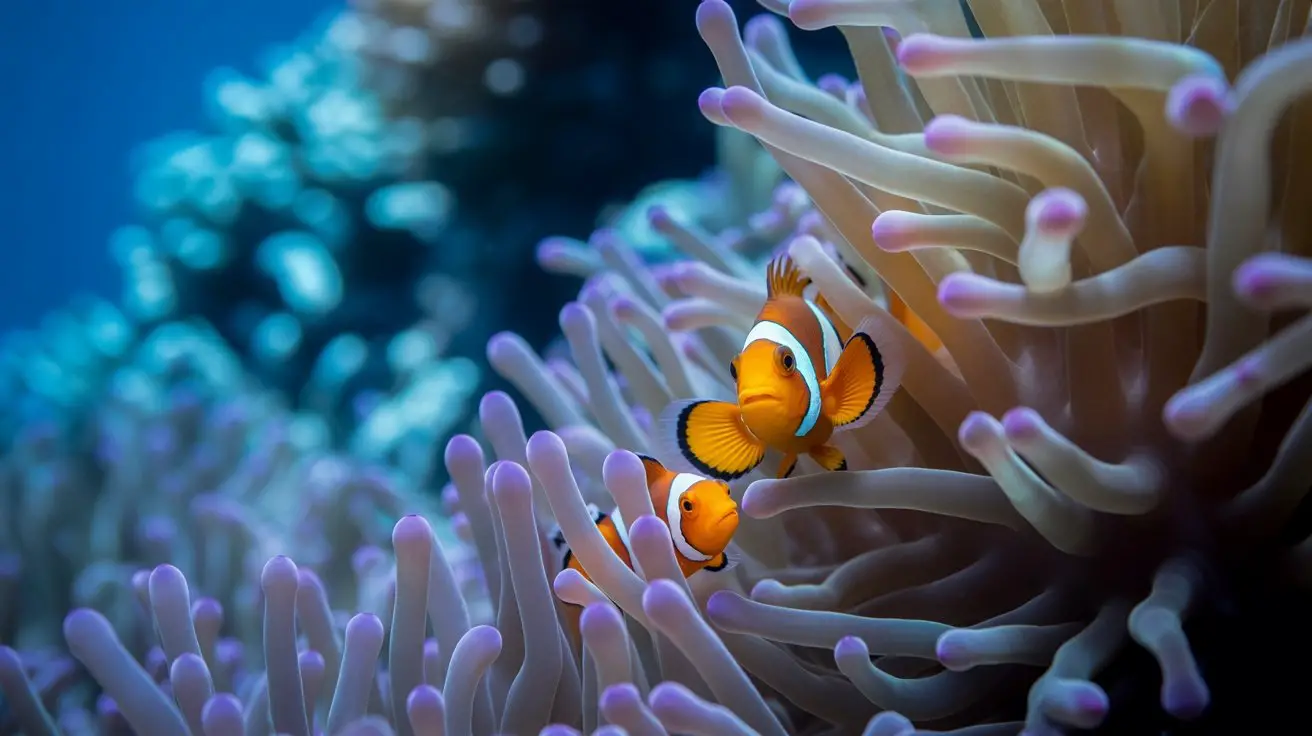
When examining actual clownfish reproductive biology, Marlin’s overprotective behavior in Finding Nemo reflects documented paternal care patterns observed in Amphiprioninae species.
You’ll find that male clownfish exhibit extraordinary nest-guarding behaviors, aggressively defending fertilized eggs from predators and environmental threats. Research demonstrates that paternal investment increases considerably when clutch size decreases, explaining Marlin’s heightened protection of his sole surviving offspring.
Field studies document males performing continuous egg ventilation, debris removal, and territorial defense during the 6-8 day incubation period.
You’ll observe similar vigilance extending beyond hatching, with males maintaining protective proximity to juveniles within anemone boundaries. This biological imperative stems from high predation rates affecting larvae and juveniles.
Marlin’s anxiety-driven parenting actually mirrors adaptive survival strategies that maximize offspring fitness in coral reef ecosystems.
Survival Skills That Helped Real Clownfish Long Before Finding Nemo’s Adventure
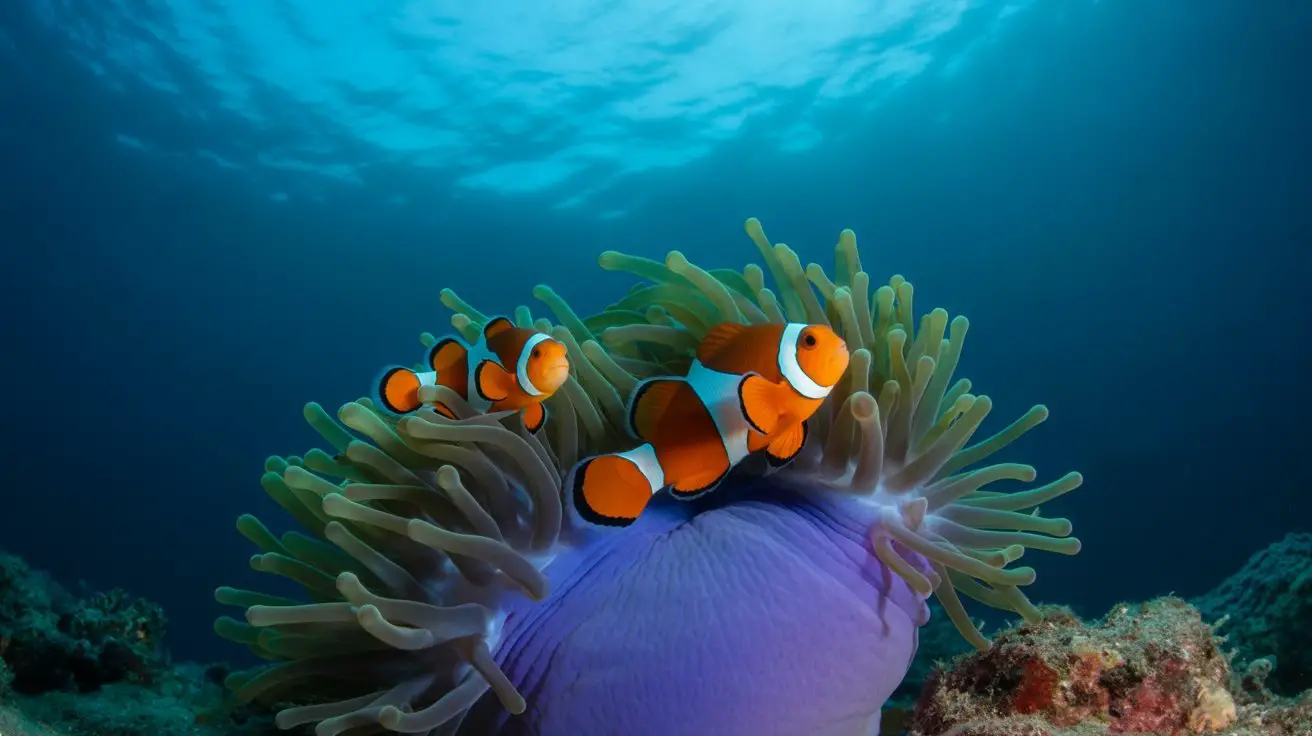
Since clownfish evolved their specialized survival adaptations millions of years before Pixar’s animated adventures, you’ll discover that Amphiprioninae species developed sophisticated behavioral and physiological mechanisms for reef survival.
These evolutionary adaptations enable clownfish to thrive in Indo-Pacific coral ecosystems through:
- Mucus immunity development – You’ll observe clownfish gradually acclimating to anemone nematocysts by building protective mucus layers containing specialized glycoproteins that neutralize stinging cells.
- Territorial defense behaviors – Clownfish exhibit aggressive posturing, rapid darting movements, and coordinated group attacks against intruders threatening their anemone hosts.
- Symbiotic cleaning services – They remove parasites and dead tissue from anemone tentacles while receiving protection and food scraps.
- Hierarchical social structures – Dominant breeding pairs establish clear rank systems that optimize reproductive success and resource allocation within anemone territories.
The Clownfish Breeding Process That Explains Why Marlin Was So Protective
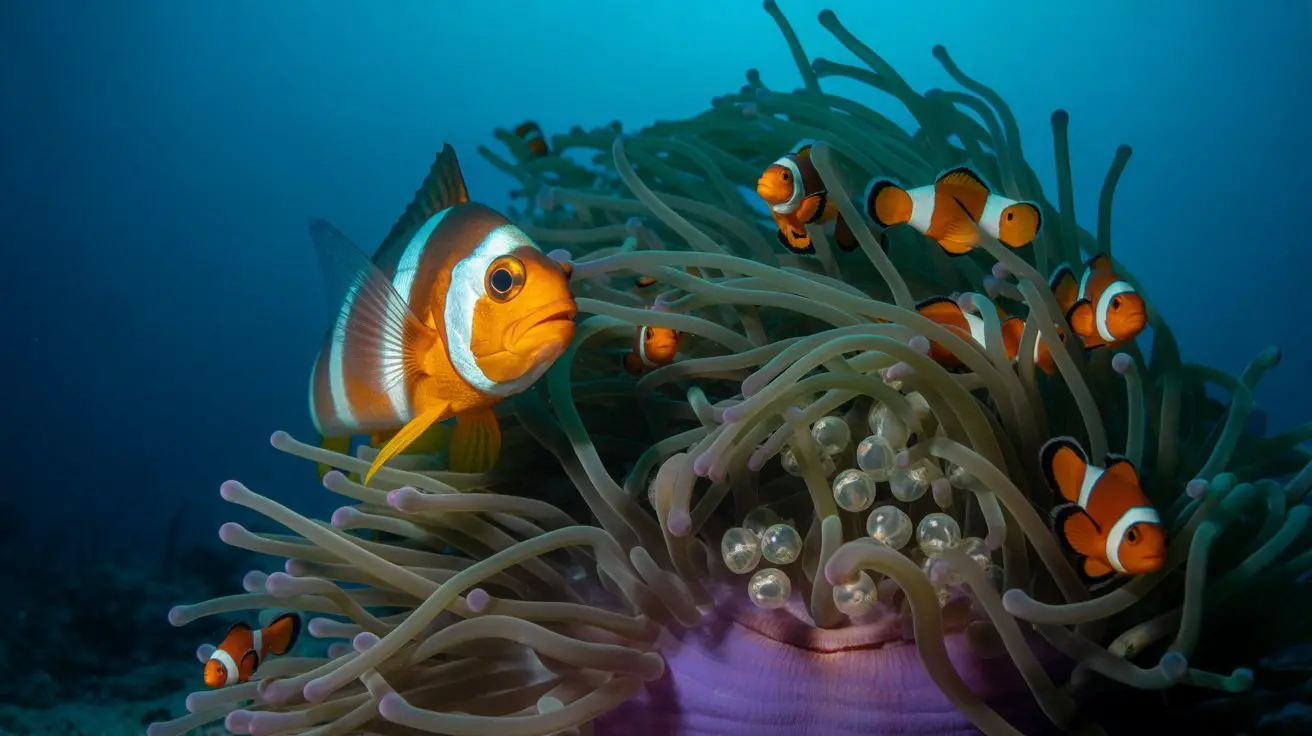
Clownfish reproductive behavior demonstrates remarkable parental investment strategies that directly correlate with offspring survival rates in reef environments.
You’ll observe that males exhibit exclusive parental care, aggressively defending clutches of 100-1,500 eggs attached to hard substrates near their host anemones. They’ll fan eggs continuously, removing fungal infections and dead embryos while maintaining peak oxygen flow. This intensive care period spans 6-10 days until hatching occurs.
You’ll find that males demonstrate heightened territorial aggression during breeding cycles, attacking potential predators regardless of size differential—explaining Marlin’s protective instincts.
Post-hatching larvae face 90% mortality rates during their pelagic phase, making paternal vigilance evolutionarily critical.
Sequential hermaphroditism guarantees breeding pair stability, with dominant females producing larger clutches requiring sustained male protection investments.
Conservation Efforts Protecting Nemo’s Real-World Relatives Today
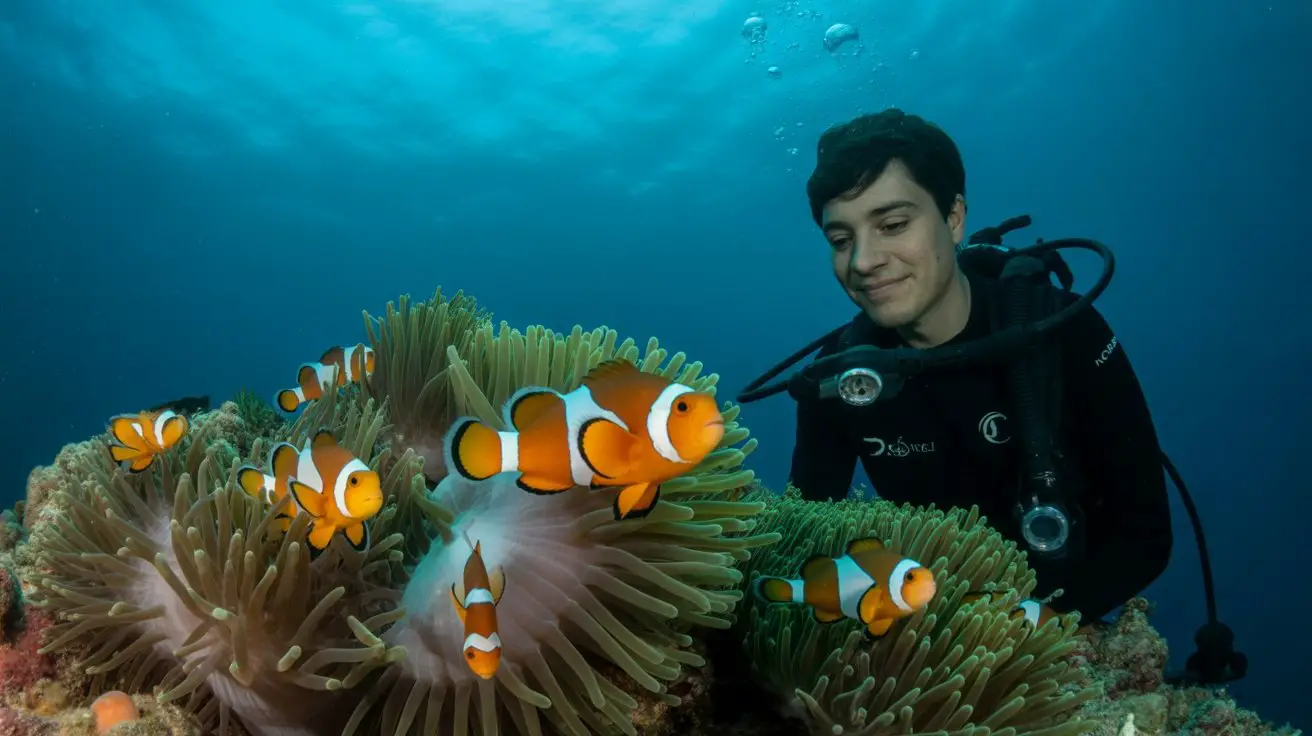
Although Disney’s Finding Nemo sparked unprecedented public interest in clownfish welfare, marine biologists now document alarming population declines across Indo-Pacific reef systems due to ocean acidification, coral bleaching events, and aquarium trade exploitation.
You’ll find extensive conservation initiatives targeting anemonefish populations through:
- Marine Protected Areas (MPAs) – Establishing no-take zones across critical spawning habitats in Southeast Asia and Australia’s Great Barrier Reef
- Captive Breeding Programs – Developing sustainable aquaculture techniques to reduce wild-caught specimens for commercial trade
- Coral Restoration Projects – Implementing heat-resistant coral transplantation to rebuild damaged anemone host communities
- Water Quality Monitoring – Installing real-time pH sensors to track ocean acidification impacts on larval development
Research demonstrates that integrated approaches combining habitat protection with sustainable fishing practices show measurable success in stabilizing local clownfish demographics. Additionally, Marine Protected Areas have been shown to significantly enhance the resilience of marine ecosystems, providing crucial support for clownfish populations.
Conclusion
You’ve witnessed how Pixar’s animated masterpiece reflects genuine marine biology—from sequential hermaphroditism protocols to anemone-fish mutualism dynamics. While Marlin’s parental behaviors align with empirical observations of male brooding patterns, the film’s anthropomorphic elements naturally diverged from actual *Amphiprion* reproductive cycles. Your understanding of these fascinating cnidarian-fish relationships should motivate participation in reef conservation initiatives. Remember, protecting coral ecosystems isn’t rocket science, but it requires evidence-based action to preserve these remarkable symbiotic partnerships for future generations.
